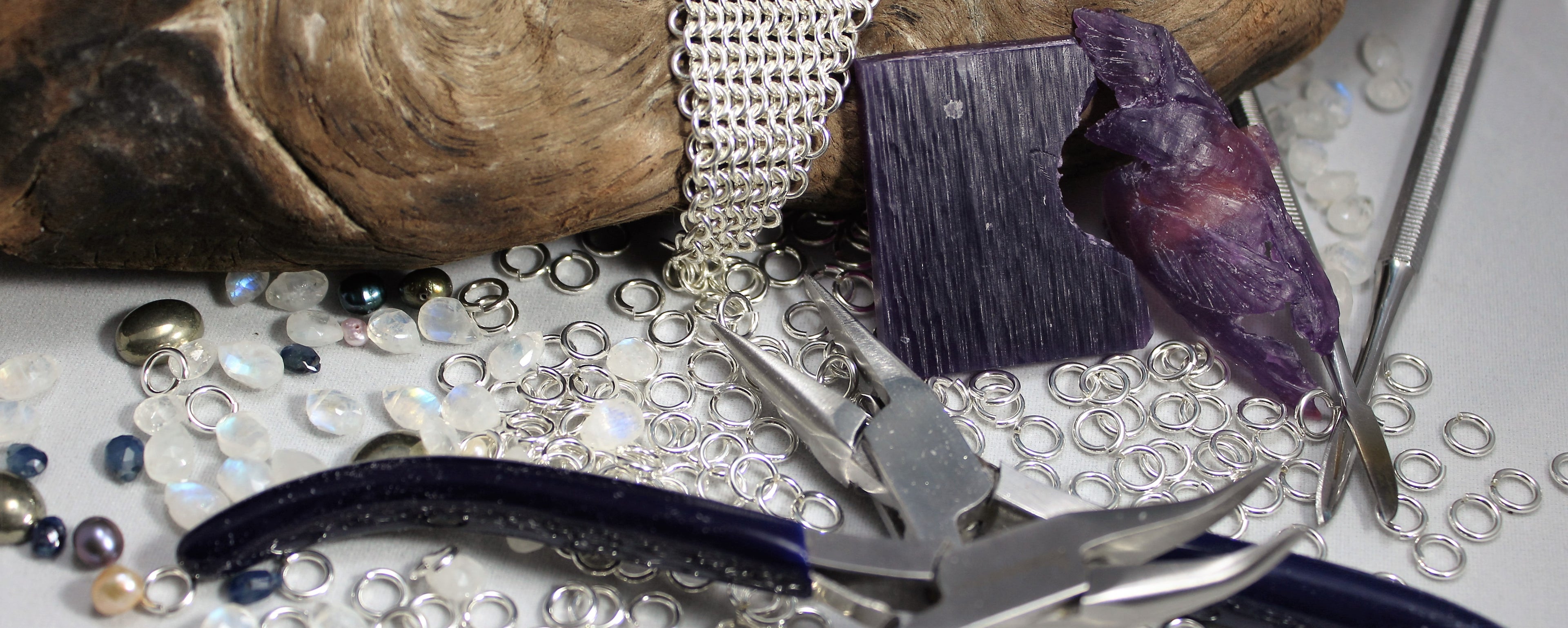What’s the difference between Plated, Vermeil, and Gold-filled?
This is a very good question, and knowing what the difference is between plated, vermeil and gold-filled can save you from some disappointment in the future and allow you to take better care of your jewelry.
The three of these, plated, vermeil, and gold-filled, are actually all just types of plating with the difference between them being how thick the plated layer is or the method used to apply the plating.
The thickness of the plating is measured in units called microns. A micron is one thousandth of a millimeter which is teeny tiny! To give you some idea of how small a micron is; the thread of a spider’s web is roughly 4 microns thick and a human hair is about 60 microns thick. The FTC has rules in place regarding the thickness and the karat of precious metal used in plating when it comes to the legal definitions/names. In all instances of plating, the FTC requires a minimum of 10k gold to be used. Higher karats can be used, but not lower. In this post I’ll go through the three types of plating I’ve already mentioned, and a couple of lesser known types too.
Gold plated is the first. To qualify as gold plated a piece must be coated with a layer that is a minimum of half a micron(0.5µm) thick. Quality stamps on plated pieces must state the karat of the gold but do not need to mention any micron measurement, although some manufacturers will. An example of these stamps would be 14k G.P. or 1.5um* 18k G.P.
*um or micron or µm can be used interchangeably
There are two other versions of gold plating; the first is Gold Electroplating and the second is Heavy Gold Electroplating. Both use the same method to apply the layer of gold but with very different results.
Gold Electroplating needs to only have a layer of gold 0.175um thick. It can be so thin it will often be called “gold washed” or “gold flashed”. Quality stamps will include the gold karat and the letters G.E.P.
In contrast, Heavy Gold Electroplating must have a layer of gold that is at least 2.5um thick. This makes it superior, in my opinion, to regular plated pieces, never mind gold electroplated pieces. Its quality stamps will include the letters H.G.E.
Next up is Vermeil. Vermeil, like the heavy gold electroplating, must have a minimum thickness of 2.5um. It is also the only one that specifies the type of metal that the gold is to plate. While all other versions of plating, regardless of the thickness, can be applied to any material that it will adhere to, Vermeil must have a sterling silver base. It will be stamped with the word Vermeil.
Vermeil has a cousin called Keum-boo. Keum-boo is an ancient Korean method of gilding. In this method a thin sheet of 24 or 23k gold is applied to silver. The silver is usually Fine Silver, which is 99.9% pure silver, but can also be applied to sterling silver after it goes through a process that brings a layer of fine silver to the surface. Keum-boo is rarely used to cover entire pieces and is more often used to create 2-tone jewelry. I am not aware if there are any quality marks for Kuem-boo.
Last but not least is Gold-Filled, which can also be called ‘gold overlay’ or “rolled gold plate”. The method to make gold-filled is different than the one used for plating. It is made by heat- and pressure-bonding a thin layer of karat gold to a base metal. Even though this layer is thin, it is far thicker than any layer that is applied by electroplating. In addition to this, gold-filled is not measured in thickness but rather in weight. The standard for gold-filled usually requires that the gold makes up 1/20 or 5% of the overall metal weight. The quality stamp for gold-filled pieces that meet this standard will simply include the letter G.F.
If it doesn’t meet the standard, then the exact percentage must be included in the quality stamp. For example: 1/30 14k G.F.
Purchasing plated pieces of jewelry is a great way to add gold to your collection without the heavy price tag, and knowing how thick the plating is can inform you as to how much wear your piece can withstand before losing its plating.
To give a very rough idea of the price difference I found four very similar chains, all 18 inch cable chains, in plated, gold-filled, vermeil, and solid gold. There were very slight differences between the chains but they’re as close as I could get to each other. Each price is the approximate retail cost for one chain.
Gold plated: $8
Gold Fill: $40
Vermeil: $93
Solid Gold: $532
As you can see the price jumps quite a bit between the different kinds of plating, and the difference in price between any of the plated chains and the solid gold one is pretty massive!
Personally, when it comes to buying gold plated jewelry, I will happily purchase gold-filled and vermeil but I will hesitate at gold plated. I have to really love the piece and be prepared to only wear it on special occasions or risk wearing the gold off too quickly, but, then again, I’m outdoorsy and kind of rough on my jewelry. Even though I should really know better.
If you want a piece that will be long-lasting and durable then I would recommend investing in solid gold. Solid gold can be maintained and repaired far more easily than any plated piece.


1 comment
Very interesting Ciara! And very surprising to see the difference in price. Thanks for explaining so well.
Any tips for cleaning a gold-plated brass chain that’s gone quite dull?